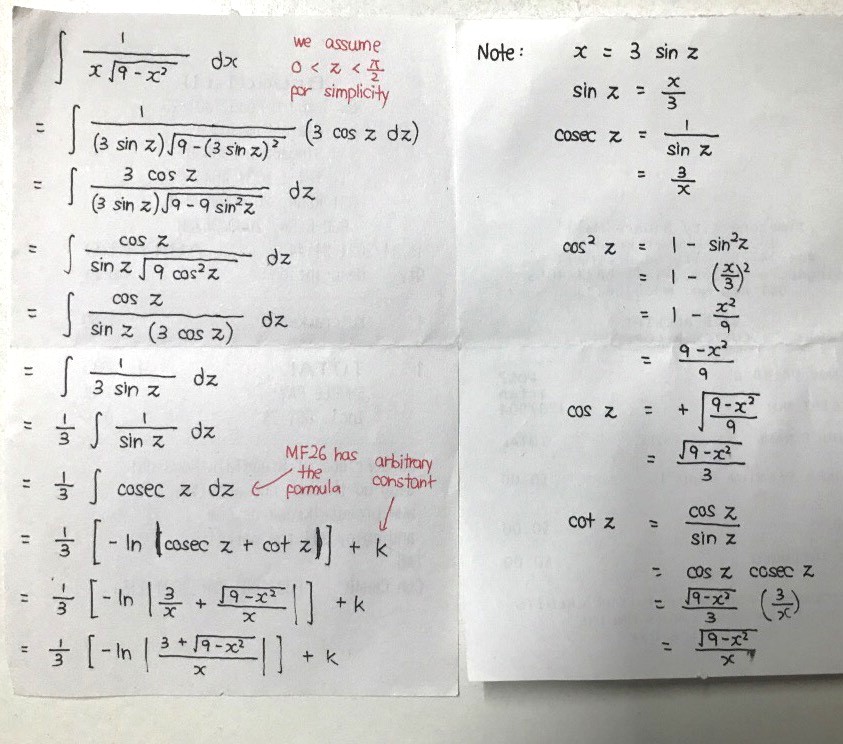Eric Nicholas K's answer to Eileen's Junior College 1 H2 Maths Singapore question.
done
1 Upvotes
clear 0 Downvotes
Second photo of my two-photo workings
I use the first-quadrant angle range for simplicity, because later on there will be a problem with the signage of cos z in my workings (will it be positive or negative or both?) if I allow z to take on two quadrants from 0 radian to pi radians
Supposing we allow cos z to be negative (and therefore the final answer will contain a +- in front of the square root).
I have checked that if we were to re-differentiate the version with a negative in front of the square root, then the resulting derivative will be the negative of our original question.
I use the first-quadrant angle range for simplicity, because later on there will be a problem with the signage of cos z in my workings (will it be positive or negative or both?) if I allow z to take on two quadrants from 0 radian to pi radians
Supposing we allow cos z to be negative (and therefore the final answer will contain a +- in front of the square root).
I have checked that if we were to re-differentiate the version with a negative in front of the square root, then the resulting derivative will be the negative of our original question.
Date Posted:
3 years ago



See the explanation under section 10.2.
Since z = arcsin (x/3),
Using the definition of arcsine means −π/2 ≤ z ≤ π/2 , so for this domain, cos z will be ≥ 0 .
So no negative sign is needed.